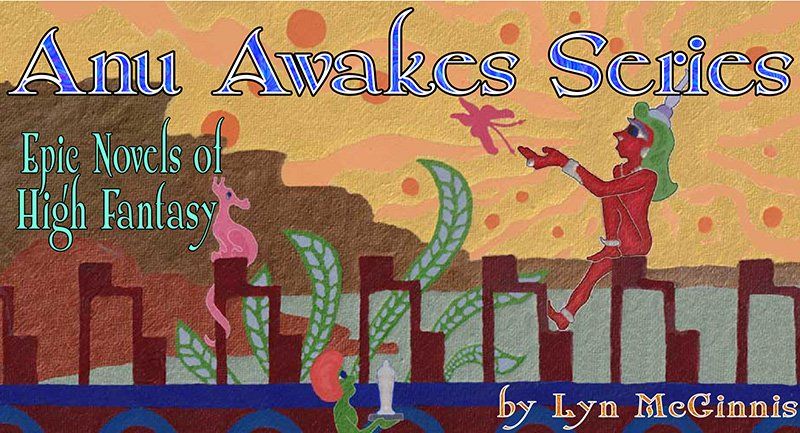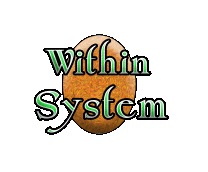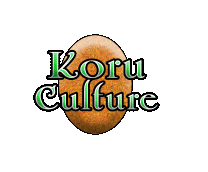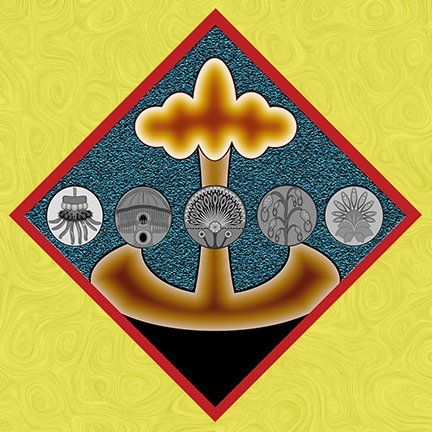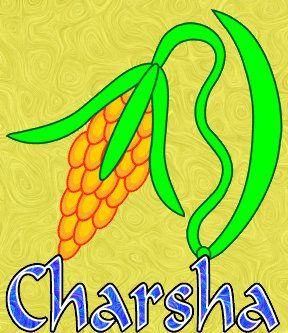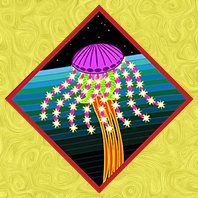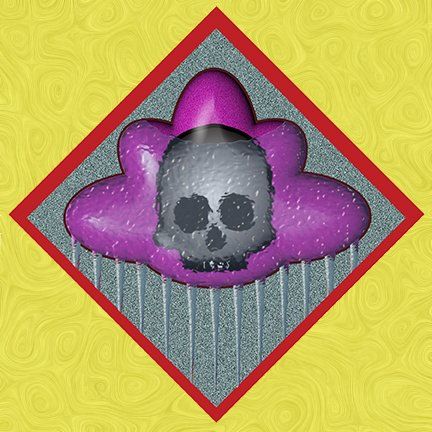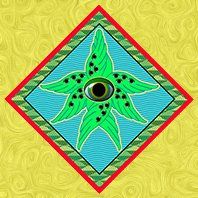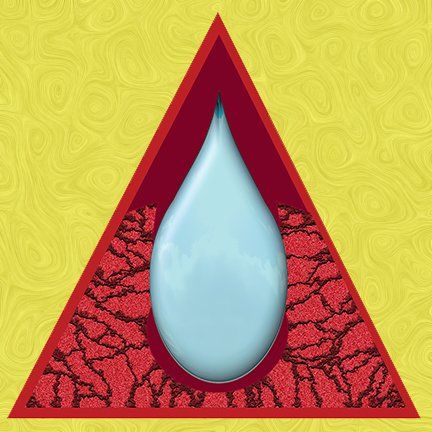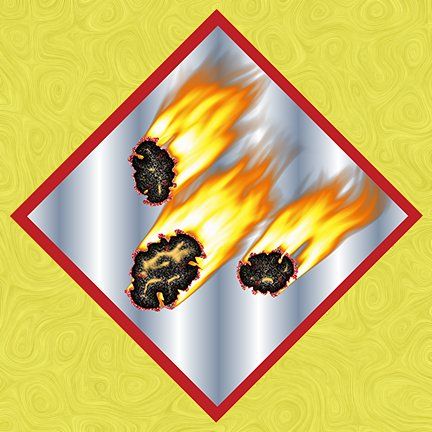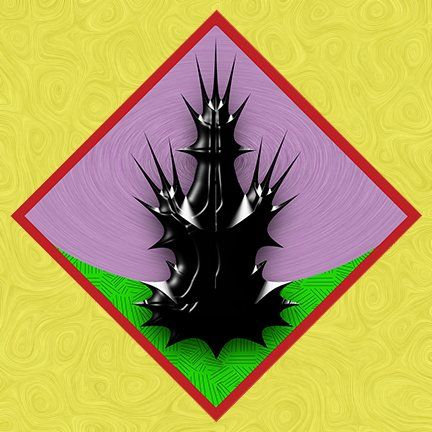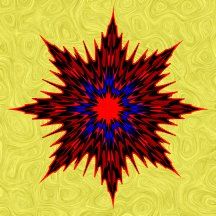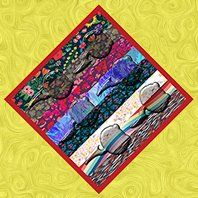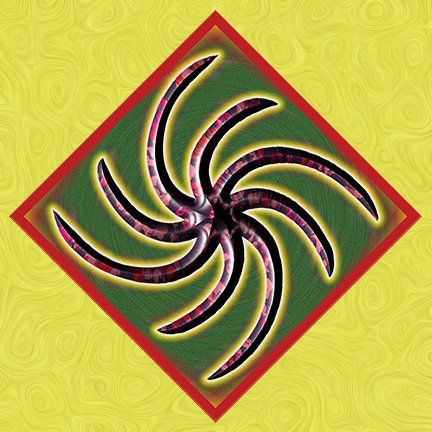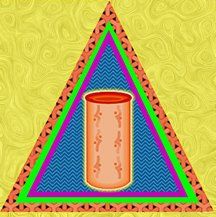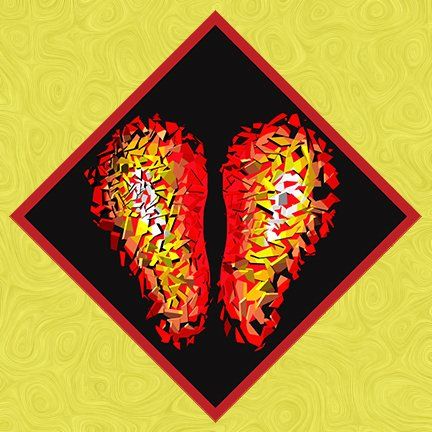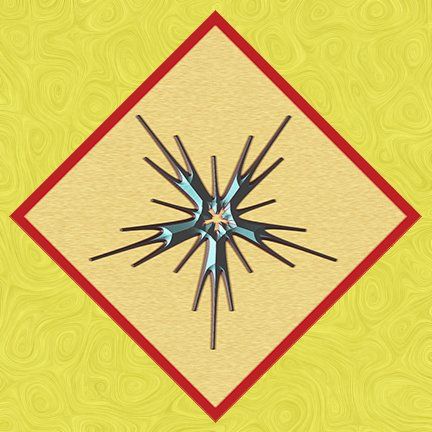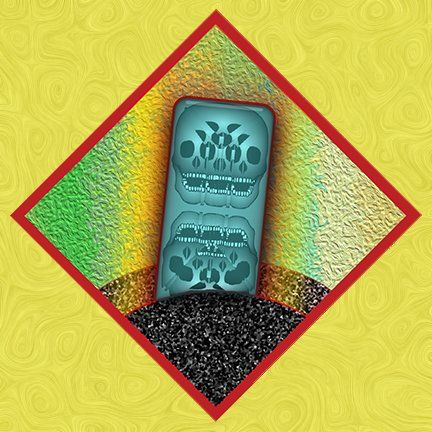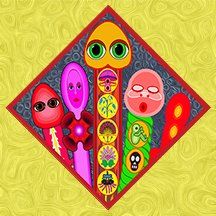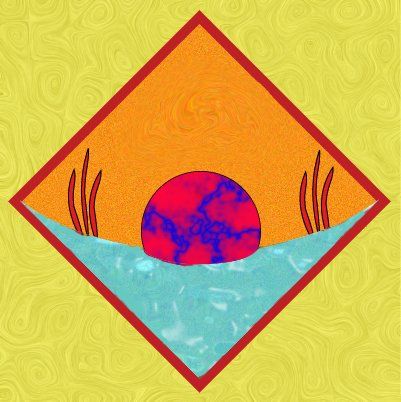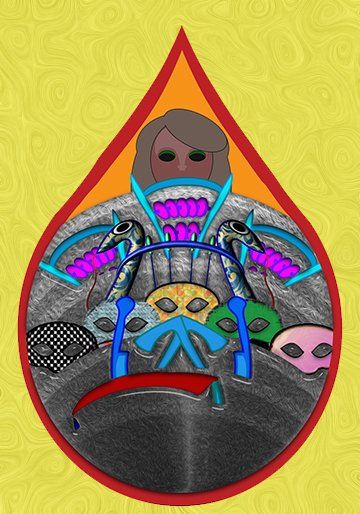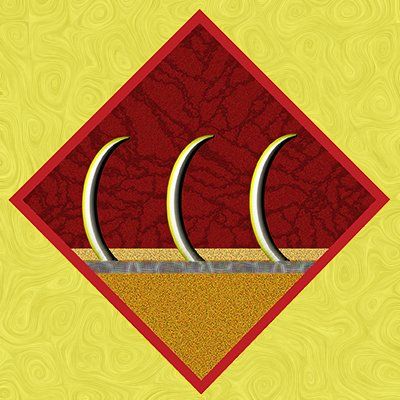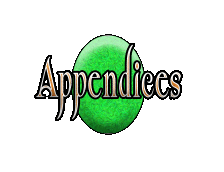
What follows is a partial catalogue of the most prominent features of Anu that are ambiguous within the Tatchlan System. Almost by definition, what is unaffected by the Living System is not alive, although, as noted below, there are some intriguing exceptions. A distinction is made between ‘entities’ and ‘nonentities.’ While far less destructive and more localized than a Burning Blossom, many of these are named ‘Banes.’ They are either met with whatever tools and ingenuity have proven effective or avoided. They are further identified by their sources, such as Sky Banes and Water Banes.
Except for the Water Column, these Banes were reported in the Primary Epoch. There appears to be an escalation of these disturbances during the Secondary Epoch. While the connection needs to be better understood, incidents of these Banes increase with an impending Burning Blossom and may occur rapidly during these Burning Blossom Cycle events. The two branches of the Variothya most often involved in addressing these occurrences are the Commandant and Wellbeing Ministries.
Despite this description, the images below are enclosed in Primary and Secondary Epoch icons. This is because these elements manifest as ‘pockets’ or ‘holes’ and have other indicators surrounding them within the Living System, making it clear what they are.
From Above:
Lifeless Curtain: Infrequent Sky Bane, Sequence of events, Caught within the Curtain: Domesticated crops immune, Insects, Bowvow and Memanu, Aerial and water beings, Land creatures, Cousins, Tolku, Koru, Yakku and Yelda
Slaying Canopy: Ample warning, Early Secondary Epoch sightings, Curious nature of Canopy, Kupat Drones One event
Water Column: Sky falls, No record of events in Primary Epoch, Water Columns in the Secondary Epoch, Evacuation only option
Eyes of Nu: Fiery Rocks, Little warning, Rare elements, Bursts and holes, Infrequent visitations, Associated with Burning Blossom, Unlikely defence
From Below
Black Yal: Dead Blood the Pus of Anu, Chelyakan beliefs, Funomanru discovery, Known locations, Associated with Burning Blossom Cycles, Cultural references, Profiting from Dead Blood, Stench Traps, Thethelem populate Val Fields, Expletives
Phantasm Spume: Not a Bane, Links to Black Yal, Primary Epoch Vision Window, Spume wakens Healing Jelly, Crafted Spume grants regular supply
Wailing Bane: Deafening scream from the depths, Wailing Song, Defences against the Wail, Wailing Bane Separations
From Water
Chill Crystals: Toxic bubbles, Deadly only in the air, Coldwater source, Never form from fresh water, Defences
From Surface
Consumption Monolith: Most feared of Skin Banes, ‘Undulating Visual Echo’ and ‘The Pull,’ Dangerous from behind and third lure, Proof of life, Mirror blank before prey too large to consume, Monolith culture, Modern safeguards, Anu map of their locations, Destroyed monoliths grow back on occasion, Life and span, War between monoliths
Hungry Rock: Gentle Consumer, Circumference, Structure and distribution, Passive and omnivorous, Hungry Oblations, Yakku secret innovation, Burning Blossom eruptions, Shadows within Tatchlan, Chelyaka and Anu Gateways
Lifeless Curtain
Infrequent Sky Bane
This is one of the most infrequent of all non-living Sky Banes and is classified as a ‘nonentity.’ Several generations may pass without witnessing these events. The first recorded instance occurred in the Secondary Epoch in 1996 UKC in a remote location in the southwestern Marachla Plain on Rho-Jashun. No correlation has been found between their appearance and predictable circumstances or conditions.
They have manifested in open country, thick forests deep in the mountains, and over open water. While rare, they have also been displayed in deserts, where the Toohund shows a surprising immunity to its effects. They are not dependent on the Daymaker Nu and may form swiftly in the dead of night. Incomplete historical records from the Primary Epoch suggest they became associated with the increasingly intense Burning Blossom Cycles. Still, several other Banes listed here are far more regular heralds of this significant event.
Sequence of events
Eye-witness accounts agree on the following aspects. In the space of an hour, a jagged line of dense black clouds, surrounded by open sky, appears. A unique ‘scraping’ sound emanates from the unusual sight. All birds and animals flee as the air grows charged. Without warning, an unrolling vertical curtain swiftly descends from this long knot of clouds and spreads across the land. The overall formation may attain several andas in length while seldom reaching half an anda wide. The result is an irregular, thick line of blackness that lands and then spreads out on either side until it dissipates.
Another irregularity is in the density and virulence of the curtain. The ‘lighter’ segments have reduced impact, and some have escaped the worst effects by locating themselves in these thin areas until they pass. There are isolated reports of small rocks and other inanimate objects being displaced by the Curtain. One story relates how a wagon facing away from the curtain moved a short distance by being pushed. An audible ‘hiss’ accompanies its spread, and those enshrouded by it feel a tingling cold in their hands and feet and a terrible taste forming in their mouths. It always dissipates in less than an hour. The one exception to this rule is the rare occasion when the Curtain descends into a deep valley, gorge, or rock-cut river channel. In this enclosed environment, it slows and persists for a more extended period, to the detriment of all inhabiting this area.
Caught within the Curtain
Domesticated crops immune
One of the many mysteries of this Sky Bane is how it affects plant life. Most wild growth withers as if hit by an unseasonable frost. This may lead to grasses dying back or stunted after the curtain passes. There are accounts of entire stands of trees dying at once with this event, while other trees in the ‘thinner’ sections survive relatively unharmed. In the following season, grasses and other annual plants return unaffected. Trees also rebound as if after a drought year followed by generous rains. The Unifying Dynasties of the Lesser Era of the Primary Epoch noted the unlikely fact that hybridized domestic crops, including Charsha, Salarish, and many inhabitants of Fecund Farms, appear impervious; the Curtain, even though their raw antecedents may suffer or even die under the same assault. Planted Charsha fields in the path of a Lifeless Curtain have seen all their pest populations of Warbsa Beetles and Soltana Worms, along with the beneficial Teer Beetle, destroyed while the crop continues to prosper.
Insects
Most insects die outright, but two Venerable Insect Societies have a good defence. The aerial Gandahatapan, the ‘Perfection of the Air,’ is known to rise in a body far higher than usual in a dense swarm above the Curtain. Any not ascending promptly drop dead to the ground. The Ketukku, the ‘Tower Builders,’ retreat into their hardened nests and are known to move down into the lower chambers. Any not swift enough also succumb to the Curtain. The Mahakram are less able to evade the Curtain except to migrate to the trunk of their host tree. They form successive layers atop one another. After it is over, the outer layers fall away, leaving inner layers close to the trunk alive. As with some inanimate objects, the Curtain may drag the bodies of insects along with them for a time before dropping them in successive rows.
Bowvow and Memanu
The mighty Bowvow has proven itself resilient to this particular threat. Witnesses report it taking in hundreds of fleeing creatures, finding shelter within its perimeter. It is said this is the only time hundreds of tiny birds sing while inside its body. The entire being resonates with this internal chorus, amplifying it into unique music. Those witnessing their mass exit after the Curtain’s passing say it was a wonder. In literature, it has been likened to a musical explosion. There may be some withering of new growth after the event, but the otherwise healthy Bowvow can recover with little ill effect from the Curtain.
Memanu, on the other hand, is vulnerable to the Lifeless Curtain. Witnesses report they begin to sway violently and spin their flower tops before rapidly retreating down their holes. Attending creatures in their canopies are said to fly off in all directions.
Any not swift enough to be below ground when a dense portion of the Curtain arrives die at once above ground. Those caught but still going below rarely emerge again. Repeated banging on the ground in their proximity disturbs them. Thus, some Yelda living close to a Memanu Field have been known to cause this type of stir to warn them to retreat underground.
Aerial and water beings
Xumkuka, Kumastam and Tapu are usually agile enough to fly away from the Curtain. All other airborne life tends to remove themselves, with considerable commotion, up to ten andas away as the Lifeless Curtain forms. Usually, diurnal species have roused themselves in complete darkness and fly blind away while uttering their most urgent distress calls. This action has, on occasion, proven a vital warning to others.
Doreth are known for a curious response to this anomaly. They will deliberately fly towards the descending column and circle several times as it descends. They have been seen flying very close to the edge at high speeds. After completing this mystifying rite, they rise high above while it spreads. This was noted in Primary Epoch literature on many occasions and was witnessed by many Secondary Epoch Koru at the 1996 UKC event on Rho-Jashun. On this occasion, some thirty Doreth participated in this shocking ceremony, flying without riders in something resembling close formation. Several observer accounts attest they all survived their exploit to fly away unharmed. It remains an open question as to why they do this.
Due to their being ‘trapped’ at the surface, Wum are often killed if the Curtain spreads over them on the open ocean. After the encounter, their shells seem to wobble excessively, and gouts of liquid shoot out of them before they sink.
Any creature living beneath the surface or diving below is primarily immune to its effects. Although most dive to a greater depth when the Curtain passes over them above, those living in shallow waters are more likely to be impacted, with shallow lakes and tidal pools sometimes being scoured of life.
Land creatures
Danta, Pathuda and other land herds and packs have been seen stampeding away from a Lifeless Curtain and can usually outrun it. Those unable to do so are typically lame or sickly. While there are no accounts, it is presumed this was also true for the Suvuka. Thyma and other predator packs have been seen staying out of reach, only to immediately return once the Curtain dissipates to feast on those killed by its progress.
There are two documented Primary Epoch sightings of the fearsome Toohund, who shows no fear and suffers no ill effects from a lifeless curtain. The desert is the least likely location for this Sky Bane to form. It is also argued it is far less potent in this environment. The Toohund stands alone in its apparent indifference to what terrifies most others. Hungry Rock is not considered as alive as all these other creatures are, so it may not surprise the reader that they are also tranquil during such events. One incident of note is how any dead insects dragged by this Sky Bane are relieved of them over Hungry Rock, which affixes all of their bodies to itself. A snapping sound during this transference, as if the Hungry Rock is wrestling these prizes from the unwilling Curtain.
Cousins
As with all other creatures, all seven classes of Cousins avoid the Curtain as they can. The Asaku, Mayku and Tecku migrate to the tops of the canopy or jump from tree to tree if they find themselves in shorter flora. Seldom, if ever, do healthy members of this class come in contact with this Sky Bane—those who do tend to fall sickly and die at a later time. Patzku and Varku are less likely to climb as their weight and diminished skill preclude them from ascending to a sufficient height to avoid the Curtain. They often seek shelter underground or within raw or improved enclosures, preferably composed of stone. While living separately, these two are seen to link together to form a single troupe to evade this and other Banes. The two grand Land Walkers, the Toboku and Tamku, are the most vulnerable. If they cannot outrun the pace of the Curtain, they are likely to be overtaken by it. As with the Tolku and their successors below, those impacted by this Sky Bane are unlikely to die. They are often adversely affected nonetheless.
Tolku, Koru, Yakku and Yelda
The Tolku and all their descendants have reason to fear this Sky Bane. Except for those already weakened in some fashion, direct contact does not lead to death. As with recorded instances among afflicted Cousins, all Tolku and their progeny caught inside are permanently robbed of all scent and taste. This devastating loss leaves survivors unable to participate in most cluster activities. While most survive, they live reduced lives, and the Pacifier Bureau of the Cluster-of-Clusters Wellbeing Ministry sets aside various Soothers and specialized resources for their care. Wherever possible, the Calamity Bureau of the Commandant Ministry organizes swift evacuations of the area ahead of the event.
Slaying Canopy
Ample warning
Unlike the Lifeless Curtain, this Sky Bane and ‘nonentity’ gives ample warning of its approach. Clouds form a solid black mass over several two-weeks. They hang low in the sky, with other clouds passing over unaffected. Again diverging from the Lifeless Curtain, birds appear compelled to fly into the darkness before it descends as wild animals gather underneath. It lands and seeps into the ground, revealing the near-frozen dead bodies of any creatures swallowed by it, along with the dead remains of all vegetation beneath it.
Early Secondary Epoch sightings
This version of a Sky Bane is well documented in surviving Primary Epoch literature. The first witnessed and recorded incident in the Secondary Epoch occurred in the year 846 UKC in Northern Rho-Jashun. There are unconfirmed reports of an earlier event taking place during The Interim in what is now District Six, the Bangkur Interlaced Dependency, in the year 178.
This same year was named the commencement of ‘The Happy Century.' This was due to the reuniting of the Yakku and Koru. There were no close witnesses to this event. It was seen from a distance and only investigated much later. The scarred area and remnants of animals conformed to what was known of this Sky Banes’ presence. Other such sites were located, but given that the area may remain scarred for a decade or more, there was no way to ascertain when they occurred.
Curious nature of the Canopy
The unusual nature of this more frequent Slaying Canopy has been studied intensively, and most animal life gravitates to it. Somehow, the Canopy compels them to approach as they break with standard life patterns and appear to rush towards it with some urgency. Cousins are know to evade it as they do other Banes, as do the intensively improved Krall, who has been seen in formations attempting to keep different species of birds from flying into it with limited success. These Sky Banes are deemed less of a threat given their extended warning and long gestation period. The other reason for diminished concern is that Tolku discovered a surprisingly simple defence.
The standard custom is to build a large bonfire underneath. When the Canopy descends, the fire rushes into the mass and breaks it up before dissipating on contact. In modern times, experts from the Calamity Bureau of the Commandant Ministry are dispatched to ensure this Banes ‘funeral pyre’ is adequately built and lit at the precise moment.
Kupat Drones One event
The best-known example of this occurred in 1211 UKC, during the reign of Majastas Zudaz-Lovol, the third member of this dynasty. A massive manifestation of this Sky Bane formed near Kupat Drones One, the second of the Kupat series. This Living Mountain was raised by Her predecessor, Majastas Zudaz II, eight hundred and fourteen years before. This was the first recorded instance of a Slaying Canopy’s advent in a highly-populated area.
Open grasslands were directly under its formation, and the time for its development was well known. Huge populations from the Mulungus and the other six Kupat Living Mountains had time to travel to the site and witness the event. Kites were flown around it to discourage avian creatures from approaching, and barricades kept animals from gathering beneath it.
Something of a carnival atmosphere developed as an immense pile of dry fuel, along with many hastily fashioned wood and paper amazements for the occasion, was arranged directly underneath the stationary formation. Circle Dances, theatrical performances and gymnastic displays were carried out while the crowds waited. Large flocks of Krall circled the scene, providing Eye Windows for Invocates and many others to witness the event throughout the Koru Cluster-of-Clusters Nation.
A roar went through the assembly when the Slaying Canopy began to drop. The immense bonfire ignited, and a hush came over the crowds as the black mass approached the roaring flames. Initially, the Canopy settled onto the pile and appeared about to suffocate it. Flames dramatically burst through it, creating what is termed ‘light veins’ that swiftly permeated the entire opaque mass. Despite the Slaying Canopy being taller and broader than its pyre, the flames engulfed the enormous black body before it touched down. It began to break up into small flaming balls rolling short distances before dissipating. Majastas Zudaz III was present for this event and the celebrations afterward, which were immortalized in song and drama. In the following millennia, many similar occurrences were consistently named ‘Kupat Drones One Event’ in honour of this celebrated precedent. It has been suggested that part of the reason for the accompanying revelry is that this is the one Bane that can be dispatched with such ease. An example of another Sky Bane from which there is no defence is immediately below.
Water Column
Sky falls
This nonentity event occurs when one or a group of intense spiral cloud formations take shape in an otherwise clear sky. This Sky Bane sucks all aerial moisture into its emergence. These spirals appear as alternating light and dark ridges slowly revolving, accompanied by what sounds like the roaring of a great river. The torrent falls from the most significant first in a sudden waterfall, causing extensive damage, including deep excavations of softer material and localized flooding.
The impact is so intense the sound may knock over witnesses standing an anda away. As the high waterfall continues, the mass quickly contracts until the cloud formations and their waters dissipate. The resulting pools and sudden rivers contain the sweetest water known to Anu. There is no defence for this potent phenomenon, and the area is evacuated for andas around the impact zone. Nothing within the Water Column’s radius survives, and its attentions may alter even mountains.
No record of events in Primary Epoch
Unlike all other Banes, there is no record of these events in the Primary Epoch. The ‘Pauloman Catalogues’ of the Midin Mountain Amassment, a vast library of pre-Tatchlan resources, lists many works on the other Banes but makes no mention of this one. Many copies of the ‘Pauloman Catalogues,’ exhaustive and complete in their contents, survived the Midin Mountain Tragedy. No mention of this extraordinary event is found in any subsequent Primary Epoch document. This fact has caused considerable debate and concern about what appears to be a new Sky Bane, although the resulting waters have proven quite beneficial. Due to this, the icon for this Bane was constructed by the Koru early in the Secondary Epoch. It shows the massive volume of water falling as a single drop, fragmenting the landscape beneath it.
Water Columns in the Secondary Epoch
There have been seven recorded Water Columns in the Secondary Epoch, making them the most infrequent of all Sky Banes. The first was in 672 UKC on Statos-Vey in the future Yeldic province of Hain-Shum on the northern border of the Western Veradapandra Range. Despite this antiquity, the resulting impact site is still visible. After that, six additional events have taken place. As with other Sky Banes, there is no discernible pattern regarding their dispersal.
The second event was in 17,398 UKC in what will, in the distant future, be the city of Chichalon on Lake Teval on Thermistal. The third falls in the year 48,539 UKC in the near geographic centre of the Marachla Plain on Rho-Jashun. Fifteen years after distinguishing himself in overseeing relief from the Chounen Quarter quake, General of Interior Command and First Commandant Vaxo-Mund, was dispatched to witness the third manifestation of this terrible marvel and evacuated twelve Field Yelda Clusters from a wide area around the occurrence. As a result of this caution, the immense impact of the waters, while scouring the landscape below it, saw no casualties. This general, famed for his part in the Second Rectification on Tich-Tushmul Island, is profiled in the third novel of this series, Dalinantu Emergence. The fourth Water Column falls in the year 70,915 UKC, and the year 22,196 of the Nantu Calendar of the Danam Yelda, only twenty andas south of the Upata-Shuna Avenue and Transit Line and ten andas north of the Ashailna River as it travels between Lake Napiruka and Lake Mererish. The fifth recorded incident of a ‘Water Column’ falls in the year 77,361 UKC and the year 22,196 of the Nantu Age in what is known as the ‘Ring Lakes Region’ of northwestern Thermistal. This was during the reign of Danam Yeldic Majastas Kavan-Kyan V, who felt a tear within the Living System of Tatchlan of the event. Much later, it was learned that thirty-eight of their Swaying Wajah died as a result. The sixth event occurs on the outskirts of La-Hev-Hav Provincial Centre within the Western Veradapandra Range in the year 93,278 UKC and N 22,196. Thus far, the seventh and final event also fell in the Veradapandra Mountain Range. In 145,989 UKC and N 97,179, a Water Column fell twelve andas south of the Yeldic Provincial Centre of Bai in the Central Veradapandra Range.
These details illustrate the rarity of this event and its wide dispersal across Anu. The presence of humidity is a contributing factor. This Sky Bane has never visited arid regions and certainly not Anu’s deserts.
Evacuation only option
Given this nonentity event's devastating nature and the extended warning period, the only option is to evacuate the region. The Calamity Bureau of the Commandant Ministry sends a considerable force to assist in organizing all affected clusters to remove themselves and their essential possessions from the projected area of impact. In this rare instance, the Bureau also serves not only to return the native populations to, or near, their original location but also to assist them in collecting the now highly-valued waters that fill the excavated areas.
Fiery Rocks
While the disc of Nu may occasionally be referred to as the ‘Eye of Nu,’ it is far more common to use the expression ‘Eyes of Nu’ to refer to small and large fiery rocks believed to be sent from Nu. These rocks roar across the sky and impact the Skin of Anu terribly. In most-ancient times, some communities held that the night stars were all little ‘eyes’ of Nu whose great Eye slumbered. Occasionally, any falling to Anu were called ‘falling Eyes of Nu,’ hence the current imprecise term.
Little warning
Eyes of Nu operate outside of the Realm of Life on Anu. They present little in the way of portents of their arrival beyond an unusual wandering light in the sky shortly before they arrive. The The Calamity Bureau retains those versed in the ‘fixed and roving stars.’ They attempt to discern these rogues ahead of time and calculate the likelihood of their hitting Anu’s Face. Upon determining this certainty, they ascertain their likely impact site and complete evacuation of affected populations is implemented.
Notwithstanding ongoing observations, small Eyes of Nu often elude detection until little can be done beyond sounding an alarm.
Rare elements
Once such an event takes place, many converge on the site. The impact site is examined once any necessary rescue or recovery of afflicted populations are seen to. If possible, the ‘eyes’ or their fragments are retrieved. In prehistoric times, these items often possessed unique elements, making them rare and valuable. The ‘Pauloman Catalogues,’ detailing the immense treasury of books from pre-Tatchlan times found within Mount Midin, known as the Midin Amassment, included several volumes dedicated to applying these rare elements. Titles suggest many mechanical and medical uses. Others listed numerous Primary Epoch monuments and smaller treasures employing these unique minerals in their design. All these volumes were lost in the Mount Midin Tragedy. Knowledge of the utility of these rare elements has been rediscovered in the Secondary Epoch by the Koru. They now possess a thorough understanding of their properties and uses.
Bursts and holes
Within Tatchlan, there are subtle yet unmistakable signs of these impacts. Most occur in what is known as ‘The General Plain,’ the most refined and least demonstrative portion of the Resplendent Work. This broad principality, featuring gentle rounds and profoundly deep and elongated folds, is seldom visited by the rushing fluids of the Common Desire, which finds little to sate its gross cravings and restless wanderings. The General Plain underlies the Living Orb, being the most extensive labour of the first generations of Masters. This exposed portion of the foundations is connected to all else and thus may discern global patterns to the most discerning of observers. Here, the impacts of Eyes of Nu are briefly visible in the form of bursts of light and small holes on the surface. These holes only linger for an instant and then are gone. However destructive the collisions are on the Skin of Anu, they have little to no effect on most of the Living System.
Infrequent visitations
Such events are a rare occurrence. Several generations may come and go between their rude afflictions. Honoured Historians see a general pattern of between one and two thousand years between these cataclysms, although many exceptions to this general rule exist. Due to Anu’s topography, it has been determined more than half of these intruders land on the far side of Anu in the vastness of the Wakanda Ocean. This may be confirmed by subsequent swells or violent storms hitting coastlines hours or days later. Whenever they come, they often travel in packs of between one hundred to several hundred. Most of these are fist-sized or smaller. On average, half to two-thirds dissipate in flames in the upper air. These events may be a minor nuisance or a major calamity, depending on where the remainder strikes. Even sky rocks of this size may still do terrible damage. These packs are more challenging to discern among the crowded night firmament. A sudden fiery entry into the air and a concordant roar are often the only warnings they allow. This offers the briefest of windows to take cover. Occasionally, they linger long in the air and streak the sky in blazing lines from horizon to horizon. Packs of more massive boulders are located with ease before they arrive. They tend to travel in smaller numbers but are rightly feared for the extensive devastation they may inflict. Due to their size, they seldom dissipate before striking Anu.
Associated with Burning Blossom
Records indicate a long-standing association between an impending or occurring Cycle of a Burning Blossom and a dramatic increase in incidents of Eyes of Nu falling on Anu, leading to them being named ‘Blossom Heralds.’ It is surmised this event affects the dead vacuum between Anu and Nu as much as it does the living loam, and many travelling rocks are knocked off their lonely courses to wreak havoc on the living. As such, Eyes of Nu have become terrible punctuations in a series of Portents of the greatest of calamities.
Unlikely defence
Sheret is a crustacean frequenting the southern tip of Thermistal and all of coastal Statos-Vey. It is distinguished for having the hardest and, at the same time, most pliant animal shells on Anu. The shell can absorb shocks from stones or even some metals without shattering by bending and then swiftly returning to its former shape. Early in the Danam Yeldic Majastas line, it was determined that this unlikely item could prove a vital defence against Eyes of Nu. This work became more urgent when most Yeldic clusters moved into living Upata Bulbs in the Emaxul Age. In 333,752 UKC Majastas Multitude Yandu LXXIV completes work on a shield composed of the shells of this crustacean by powerfully fortifying its principal food, a moss known as Elara. The shells are harvested and bound together to produce robust, elastic shields that withstand repeated bombardment by Eyes of Nu, particularly during a Burning Blossom Cycle. Many instances of these shields encasing a Upata Bulb, standing firm against the direct impact of a mid-sized Eye of Nu. Remarkably, the Upata Bulb and most, if not all, of the cluster sheltering inside survived.
Black Yal
Dead Blood the Pus of Anu
Black Yal, a nonentity, is also called the ‘Dead Blood’ or ‘Pus of Anu.’ This Anu Bane is a thick black liquid emitting a dreadful stench as it issues out of the soil or spreads across the ocean's surface, often during quakes. Occasionally, it erupts out of the ground in a loathsome fountain. It has the added feature of being highly flammable, posing a significant danger to all around it. Black Yal is deemed universally foul and lethal to all living on the Skin of Anu. It is also associated with disturbances brought on by the Burning Blossom.
Chelyakan beliefs
The most-ancient Chelyakans were particularly disturbed by this manifestation of Anu Bane, seeing it as a fearful sickness on the Skin of Anu. They came to believe the only remedy was to brave being soiled by opening the vent wider to, as it were, lance the boil. The intent was to ensure Anu’s Pus evacuated swiftly so that the Skin of Anu could heal. Given what was learned later, it will be no surprise this only increased the flow, causing the community to flee the area and avoid it in the future.
Funomanru discovery
During the first unifying dynasty of the Tolku during the Lesser Era of the Primary Epoch, an eruption of Black Yal caused the reigning emperor to commission an intensive study of this vile issue to understand it better. After decades of research, they reached a disturbing conclusion. The site of the eruption was only the most inconsequential manifestation of vast underground lakes of this abominable substance containing compressed dead flesh of innumerable ancient creatures. As a result, the appellation ‘Dead Blood’ was applied to it. This term later became ‘Yal’s Blood,’ although the origins of the word ‘Yal’ are unclear. They also found surprising linkages to another non-living emission of the mountains, Phantasm Spume.
Known locations
Unlike the roving nature of Sky Banes, this Anu Bane is stationary, and its sites are well known. Occasionally, a new emission unexpectedly takes place, but for the most part, this is just a new discharge from a known underground pool of Dead Blood. These land locations are cordoned off with high walls to minimize contamination from this foul venting, and elaborate measures are taken to ensure the water table is not contaminated. Other reservoirs of Black Val exist under the ocean, making management impossible. These are mapped, and what precautions can be taken are enacted. Due to their location on open water, their effluvium is far worse. Anu Quakes, often associated with Burning Blossom Cycles, are a common cause for these land and sea vents to open. When a vent appears to cease, there are attempts to cap it permanently. In some locations, this capping causes a measure of celebration.
Associated with Burning Blossom Cycles
One of the Portents of an impending Cycle of a Burning Blossom is for the increasingly frequent Anu Quakes to loosen any inhibitions of these Black Yal Fields and bring about new eruptions. They may also cause new black fountains to emerge on land or sea, sometimes of unusual strength.
In 312,002 UKC, off the shore from Yaray-Bapav Province of the Lat-Lacaz Peninsula, a massive geyser of Dead Blood polluted the southern shores of the Wakanda Channel, prior to the final and catastrophic Burning Blossom of the First Yeldic Series in 312,379 UKC.
Cultural references
Several well-known dramas from the Lesser Era of the Primary Epoch refer to Yal Blood. The Yeoyupan has the title character, the rebel son of the deity Untasha-Kabash, claim the gouts of Dead Blood coming out of Anu were his essence. He said his most loyal Suvuka alone could stand before it and fill their noses with his perfume.
The Pre-Tatchlan Tolku tragic dramatist Ashwamed’s famous last work, the ‘Erakadin,’ is in part set beside a Yal Blood Field. This backdrop served for one of the protagonist's anguished contemplation on how non-life, itself unthinking and unaware, on many occasions overcomes the living. These musings form some of the most well known artistic lamentations of the wretched nature of raw existence before the arrival of the Tatchlan System.
In the satirical drama known as ‘ Sime,’ one of the ten plays making up the ‘Everlasting Ennui’ series, the god of that name condemns those displeasing him to a lake of Dead Blood. As with all this collection's plays, this loses its potency over their infinite lifespans, ceasing to be a punishment. Those submerged in the lake drink it until the entire lake is finally gone. The play concludes with all the denizens attacking and eating Sime himself, usually throwing ‘pieces’ out for the audience to enjoy.
The Secondary Epoch anthology known as the Tolam-Rho-Therm contains more research references to Yal Blood than any other collection. Given the variety of authors, the focus on physician features of Anu, and the extended-time period of the work, this is perhaps not surprising. One of its nine epics has a character who utters this famous line: “Yal should not stain Anu’s Face as blood should not stain the skin.”
More recent dramas have featured these fields in several ways. While there is one modern epic tragedy, like the most-ancient ‘Erakadin,’ that concludes at a Yal Field, it is primarily in comedic works that the substance serves as a vehicle for hilarious and absurd situations.
Profiting from Dead Blood
Notwithstanding all this, Yal is a source of profit for surrounding clusters. Exporting small quantities in fist-sized nuts known as ‘Tuntle.’ This nut has no value other than having an exceptionally dense shell. After drilling a small hole and coring the nut, a quantity of Val is poured into it and sealed. They are placed in racks containing twenty nuts each for transport. Rural clusters are the primary buyers, particularly in tropical regions such as Central Statos-Vey. This has to do with the ongoing challenge of dealing with a creature known as the Thethelem. This small, near-transparent being lives on aromas. While they benefit from reducing the malodour of raw life, they are pests when it comes to trying to gain entry to rural cluster compounds to rob the cluster of all scent.
Stench Traps
Rural clusters create lures to keep them away from their clusters by placing one of these Tuntle Nuts in a large bowl slightly flattened on one side. This is known as a Stench Trap. It is composed of two half bowls. The one half has an interior niche to contain the nut, which rests on the inside of the flattened portion. The other half has a tiny slot opening the Thethelem can enter.
These two halves are joined and sealed before being set in a ring around the compound. The flat bottom sets the composite bowl on one side, with the opening facing away from the cluster.
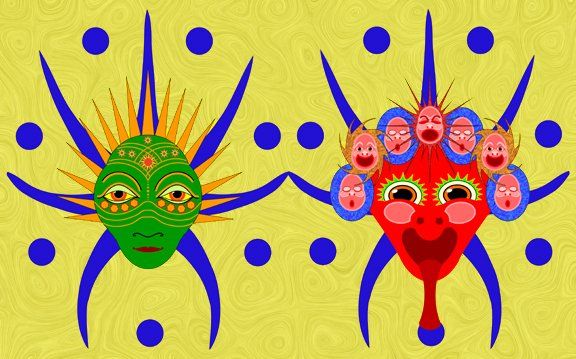
The seal is broken, and almost immediately, the Thethelem converges on the bowl from all directions to feast on the black aromas. Remarkably, they will continue to do so for up to half a year until all trace of Val is removed from the Tuntle Nuts. By this time, a fresh set of Tuntle Nuts is ready to go in the bowls.
Within a day, after new nuts are in place, the cluster can open all doors without fear of a Thethelem infestation. The Pacifier Bureau of the Wellbeing Ministry maintains standards for the composition and dimensions of these bowls to ensure universality, safety and efficacy.
Thethelem populate Val Fields
As expected, these creatures also fill these emission fields in high numbers. Their attentions mean the miasma is mitigated significantly on land for those near them. How excellent a service the Thethelem provides is made clear when Dead Blood issues out of underwater sources. The Thethelem cannot venture far out on open water and eschew the sea, so they can only feed on the aromas reaching land.
Expletives
More expletives are associated with this phenomenon than any other event on the Skin of Anu. ‘Yal,’ ‘Black Yal,’ ‘Anu’s Pus,’ ‘Dead Blood,’ and ‘Yal's Blood’ are just the more commonly used.
Phantasm Spume
Not a Bane
This is a sporadic nonentity emission from beneath the Skin of Anu in the form of dark foam. In its raw, moist state, it is a deadly poison; even its fumes may cause nausea in those nearby. While its discharges are infrequent, they manifest at specific vents on average several times a year. There is a natural buildup around these vents before rain washing them away. Despite its initial lethality, particular flora flourished where the residue soaked into the soil. While this non-living event can be dangerous, it is not classified as a ‘Bane’ due to its tremendous benefits when improved through processing.
Links to Black Yal
There has always been speculation about possible relationships between Phantasm Spume and Black Yal. While manifesting differently and Spume having very different applications, there are undeniable similarities between these two non-living materials.
It was noted that if a small amount of Yal and Spume were mixed, they peacefully interacted as if they were of the same substance. At the same time, all benefits of refined Spume are cancelled if any quantity of Dead Blood is introduced. The links between these two black eruptions from Anu continue to be studied.
Primary Epoch Vision Window
In prehistoric times, the early Tolku discovered that when the deadly foam was dried, ground, and mixed with other elements, it took on medicinal qualities and became a vital Vision Window. It was also found the refined version quickened select Tatchlan-modified beings. Due to all these benefits, it became an essential item of produce. Spume emerges primarily in the mountains, so Rho-Jashun and Statos-Vey were sources for what became a highly-valued commodity. During the Suvuka's confinement behind the Vettencore Passage, it was discovered the Mandeca Mountains of Central Thermistal were a particularly rich source. For most of the Greater Era of the Primary Epoch, harvesting regular Phantasm Spume emissions was a leading factor for much settlement and trade of the Lake Teval Basin.
Spume wakens Healing Jelly
Phantasm Spume was considered a rare commodity during the hardships of The Interim. Significant calculations went into the limited expeditions to acquire it. A massive Spume eruption occurred within the Central Triumvirate in 597 of the Interim.
This safe abundance brought many celebrations within the Sanctuaries and allowed significant harvesting to rebuild Living Instrument stocks. It also led to a notable breakthrough with its introduction to ongoing work to modify Healing Jelly within Mount Rongu’s famed Chandara Grotto.
Crafted Spume grants regular supply
Given the now fundamental requirement for Phantasm Spume; much work was done to ensure the tapping of all sources. The year 247 of the Secondary Epoch marked the end of the Suvuka on Thermistal. What would later be known as Spume Masters travelled to the Mandeca Mountains east of the Lake Teval Basin to work with the abundant sources of Spume naturally produced in this volatile chain of mountains. Only forty-three years later, in the year 290 UKC, these Spume Masters perfected the manufacture of this complex compound, assuring a continuing supply. Three grades of natural and fashioned Phantasm Spume are named ‘Pulamand’ for first grade, ‘Yumayan’ for second grade and ‘Unolanu’ for third grade. This striking achievement was celebrated, and those involved were granted the title of ‘Masters.’ This rare distinction for those working with a non-living substance is shared by those working with Preservation Cubes. Spume Masters are attached to the Doubles and Vats Bureau of the Wellbeing Ministry.
Wailing Bane
Deafening scream from the depths
This is a deadly nonentity scream from a tiny opening in the Skin of Anu, causing permanent deafness in all who hear it. An Anu quake often causes this, but the ground tremor does not need to be significant.
Sometimes, the convulsion may be so slight as to go unnoticed by all, including deeply sensitive Koru Vats outfitted with bells. By whatever means, a tiny aperture opens, releasing gasses under intense pressure, producing a harsh shriek. Those in the immediate vicinity fall ill and collapse. They rise entirely deaf. Those farther away suffer severe headaches and partial deafness.
This is the Primary Epoch’s icon for the Wailing Bane. It shows two ears set beside each other. They appear to shatter explosively, as does a tree destroyed from the inside by Karthala. The prehistoric Tolku drew this analogy. While this parallel is less evident in modern times, Tolku’s intense rendering is appreciated and perpetuated.
Wailing Song
Incidents follow a sequence once the internal pressure finds a release point. It often begins with a brief shriek too high for all but particular animals to hear. While not a sure guide, sudden changes in animal behaviour are one warning sign of an impending Wailing Bane. There have been loud reports, likely from the explosive removal of obstacles, giving ample warning. These are usually less dangerous as the aperture may quickly widen to avert the Wail. The majority of events proceed with a Wail lasting ten to twenty heartbeats. This is followed by modulation to lower frequencies as the pressure cuts through all obstacles, often punctuated with debris ejected out of the vent as it widens. This further reduces and adjusts the tone, although, at this point, there is no longer any danger. This descending string is collectively known as the ‘Wailing Song.’ The terror of the Wailing Bane’s Song is its sudden onset, unbearable intensity, and its termination in shocking abruptness.
Defences against the Wail
Given the lack of warning, little can be done beyond immediately covering the ears. It is helpful for them to push their fists against each ear while squatting and putting their heads and fists between their knees. Children can do this while some sacrifice their hearing to assist Elders, Raw and Savant Touched, and other Sensitive Spokes of the Cluster Wheel to withstand the assault. While not as feared as the Lifeless Curtain with its potential to rob all of their precious ability to read aromas, the Wailing Bane remains a terrible scourge. Those able to protect their ears may suffer long after with raging heads and a terrible ringing. The Pacifier Bureau of the Wellbeing Ministry rushes to the area to tend to those affected by this event.
Wailing Bane Separations
Occasionally, this Bane erupts so close to one or more clusters that it may destroy them. When there is little or no warning, and the cluster is caught entirely unaware, such as their being asleep, large portions of the cluster may be affected. At most, one-quarter of the cluster may lose all hearing, and the cluster still survives. In these instances, a new form of cluster communications develops. The Erudite Bureau of the Enumerator Ministry provides resources and other assistance to ensure the cluster thrives in what becomes a new culture. If more significant numbers become wholly deaf, notwithstanding the cluster’s efforts, Scent Separations may spontaneously begin. Cluster Elders swiftly move to initiate similar Separations among neighbouring clusters so an exchange of members may take place. They also call on the Pacifier and Calamity Bureaus to attend what becomes an otherwise unprecedented circulation of now deaf circles leaving the affected cluster and new hearing circles joining the affected cluster. Upon their arrival at their new cluster, these circles may Separate into half circles to be united with hearing half circles or remain whole to themselves. There are rare occasions when one or more clusters become entirely deaf. According to circumstances, this may become the core of a specialized deaf Encirclement, or a complete Scent Separation may occur. This may still lead to the surrounding Encirclement, being granted a new specialized status and cultivating new Uses attuned to their cultivated sensitivities. Given the enormity of this situation, the Majastas, attended to by their Erudite Bureau, usually manages this dramatic change.
Chill Crystal
Toxic bubbles
Chill Crystals begin as tiny nonentity toxic bubbles that form in cold oceans. They are a concentration of all the poisons found in the waters. During their typically brief air cycle, these banes become crystals before settling and melting into the water. Even before they become crystals, they can be dangerous if touched or swallowed. Should someone on shore, in a ship or the ocean be exposed to the liquid bubble, they may fall gravely ill if it is not expelled immediately.
There are many recorded instances of recovery from the bubbles. Unfortunately, depending on where it touches the body, those encountering the crystal are far more likely to be severely wounded or die. Usually, these nonentities arise in small numbers from sea foam during seasonal or other sudden temperature fluctuations. They form at the surface before taking to the air, becoming crystals as they pass over the waters, finally touching down and emerging again.
Once they take ‘crystal’ form, should they encounter any living being, they merge with their flesh and maim or even kill them. Survivors report an agonizing burning sensation, but examination reveals intense freezing that destroys affected flesh and internal organs.
This Primary Epoch icon depicts the moment the bubble takes on the dangerous crystal form. While this image is universally recognizable as a Chill Crystal, the actual formations may vary widely in their configuration.
Cold water source
The Tharapura Ocean to the north, being the coldest, produces most, which seldom come ashore but cause much shipping disruption. The colder currents of the immense Wakanda Ocean produce them to a lesser degree, but the majority sink back into the waters without any harm done. Only under unusual conditions do they reach land.
Never form from fresh water
Chill Crystals only form in oceans. Despite several large freshwater bodies on Anu, some quite cold at certain times of the year and whipped by seasonal winds, never have Chill Crystals emerged from their foam.
Defences
All ports in affected areas set up burnished tree sculptures in rows along their shores with metal lace fans for foliage meant to catch any crystals coming off the ocean. An alarm bell with a distinctive pitch is installed along the docks to be wrung when they come in. The Panchala Sea tends to be too warm for them to form. Before the Primary Epoch shipping employed sheathing of a combination of metals, usually Nuchin cladding over most of the body and Sepia for the point of the bow. This typically forms a cutting edge to move through the waters. The Engineering Bureau of the Commandant Ministry regularly inspects ports and coastal areas to ensure these structures are fortified and maintained.
There are two in this category, known as ‘Skin Banes.’ This means they are Banes found on the land, commonly called the ‘Skin of Anu.’ It is to be noted here that these are both classified as ‘entities,’ meaning despite being inert and resembling non-living items, they also possess mysterious qualities of life. Notwithstanding their potential lethality, both of these entities have seen ancient religions and cultures grow up around them.
Consumption Monolith
Most feared of Skin Banes
This ‘entity’ series of single vertical slabs of rock found dispersed across the face of Anu are considered the most dangerous of the Skin Banes. Unlike all other stones, these are a form of existence similar but not directly related to Hungry Rock. Like Hungry Rock, they absorb all that touch them, although they have been known to reject some non-living items. Unlike Hungry Rock, they actively entice their prey.
This Primary Epoch icon shows a monolith displaying some of its visual, auditory and sensory lures. The smooth ‘face’ gives a distorted image that nonetheless is entrancing. This icon makes clear the deadly nature of this entity by exhibiting the fragmented faces of skulls. This icon also illustrates their extended existence, which may lead to their leaning due to changes in the loam they are planted in. Generational observations have found they eventually right themselves.
‘Undulating Visual Echo’ and ‘The Pull’
Consumption Monoliths stand out for their regular features and smooth, prominent faces. Despite distinguishing themselves from the surrounding landscape, they still have proven to be a deadly lure. Their power rests partly in the image they present to any life staring into their polished visage. Despite being distorted, often forming multiple reflections back to the viewer, those who have escaped describe a powerful enticement to what has been described as an ‘Undulating Visual Echo.’ Another aspect of this draw is less well understood. Known as ‘The Pull,’ this force draws their prey ever closer. This pull has been proven by researchers who have approached one of these blindfolded. Despite not seeing the reflection, they attest to still feeling this ‘pull,’ which is sufficiently strong that of necessity, they are encompassed by a rope held by others keeping them back. There are also regular anecdotal accounts of those stumbling upon one of these Consumption Monoliths who manage to fight back from their ‘fascination.’
Dangerous from behind and third lure
Even from the other side of the monolith, facing away from its lethal face, these entities appear to instil a compulsive desire to draw closer. There is a stillness to the air immediately surrounding it, and many attest to this being when the ‘third lure’ is noted. A gentle, high-pitched voice is audible, seeming to sing melodiously. There are no words and little structure to the coaxing sound, but like its other snares, it proves persuasive. Those who have experienced this sound pick it out easily in future encounters with its face, but few others can note it, so alluring is the reflection to their eyes. Certain classes of Sensitives, in particular, the Savant Touched, are particularly affected by this lure
Proof of life
These seemingly unmoving entities present many qualities of the living. Several quantifiable signs distinguish them from the inert rock. Along with all the clear signs of active enticement noted above, another undeniable manifestation is clear evidence of incremental growth. These slabs endure for millennia, and generations have, at their peril, taken measurements. These prove the monoliths arise out of the Skin of Anu, and go through a cycle taking tens of thousands of years to lengthen and broaden before just as gradually reducing in size until they finally sink beneath the surface again. No connection has been found between these entities, which usually stand great distances apart from each other. Seldom has one Consumption Monolith been established within ten andas of another. See below for the rare instances of their being able to ‘see’ each other.
Mirror blank before prey too large to consume
A further indication of their possessing some form of life involves these entities immediately determining what they will not consume, such as prey too large to fit into the dimensions of their mirror. If a large Danta, or a Tamku and Toboku, happens to stray too close to a monolith quite able to swallow a Tolku, the mirror immediately goes blank and dark. This does not mean these beings are safe from other monoliths. They may grow sufficiently large to entice such a formidable quarry at their zenith. Such large entities are rare. Only one of this size would have been any threat to an adult Suvuka.
Monolith culture
There are few traditions of clusters living peacefully besides Consumption Monoliths. The most-ancient religion centred on the male God Nethuns in northern Rho-Jashun was the one notable exception. As noted below, artifacts left close to their cold forms may take on a measure of preservation. This includes many examples of mysterious ceremonial instruments set near them that remain Aeons after all other traces of their culture had vanished. Over the ages, innumerable children and cluster animals have strayed too close to these silent killers only to vanish with only the briefest of cries.
There are persistent legends told in many regions of how one Consumption Monolith was forcibly uprooted by an ancient community enraged at the continued deaths of their children. The story goes they were eventually successful, despite far more of the entity being below the surface, in the form of a giant rock-hard bulb than above. They transported it to a nearby pool of Hungry Rock and threw it onto its surface. What happened next varies from tale to tale. Still, all suggest that an unexpected series of explosive events destroyed most participants and devastated the surrounding landscape. The Hungry Rock pool sunk in some, revealing a circular pit vanishing into the darkness. These are now interpreted as cautionary tales, and there is no confirmed evidence of such events ever taking place. While ancient cultures made much of Hungry Rock, near-universal fear surrounded the monoliths. In one most-ancient tradition, they were named ‘Death Pillars,’ standing opposite the beloved ‘Life Pillars.’
Modern safeguards
A majority of Consumption Monoliths are in mountainous regions. This makes them more of a concern to the Koru Cluster-of-Cluster’s Nation than Yeldic populations. Many are situated at the end of narrow passes and other close junctures as if to ‘surprise’ unwary travellers. This has led the Koru and the Danam Yelda to block specific trails and open up others to minimize these hazards. Given their abilities and deep rootedness, whatever their location, the only precaution taken is to raise barriers and place warnings around them. By order of both the Dallamaplan ’s and Variothya's Engineering Bureau of the Commandant Ministry, in the open country, this boundary is to extend to thirty-two Ans (half an Anda) around the entity. This takes the form of a specific set of close-set vertical pillars of differing heights with carved bureau warning glyphs facing outward. It is judged at this distance that the Consumption Monolith may be viewed safely, although certain Sensitives may still hear their song. In some regions, additional barriers are erected beyond this inner circle to keep the domestic stock from approaching. The Enhancement Bureau of the Preeminent Works Ministry of the first Koru Majastas Dynasty’s historical work with these enigmatic entities is less well known. This led to the extraordinary innovation of the Preservation Cubes. Due to many factors, all details concerning this process and the employment of these Cubes are restricted. What is generally known is this is in some way related to the fact that certain most-ancient artifacts, possibly ceremonial objects placed during Nethuns rites near these beings, have been preserved to a remarkable degree.
Anu map of their locations
The locations of these deadly hazards were known to have been mapped during the Greater Era of the Primary Epoch. No complete examples of these maps survived into the Secondary Epoch, leading to the necessity of gradually rediscovering them all. A new set of maps of Rho-Jashun and Statos-Vey was commissioned after fragments of a Primary Epoch map were discovered in the year 2377 UKC, near the newly completed Kupat Farmers Two Living Mountain. Remarkably, all the locations indicated for Consumption Monoliths on the ancient map fragments were still accurate. Work on the new maps commenced during the reign of Koru Majastas Zudaz V. It took just over eighty years to conduct an exhaustive survey of Rho-Jashun. In the year 2458 UKC, it was determined there was a collection of 31,905 complete and partial monoliths spread across the continent. Incidents were higher within the Mulungu Mountains and along the coasts, with isolated Banes scattered across the Marachla Plain.
Sixty-six years after commencing a second survey, it was determined there were 19,878 monoliths on Statos-Vey in the year 2524 UKC. As with the Rho-Jashun’s population, most of the subcontinent’s Skin Banes are collected within the Veradapandra Mountains. As the Majastas Hand did not extend to Thermistal for much of the Secondary Epoch, a comprehensive continental survey was never completed during the timeline of this novel series. Partial and anecdotal evidence suggests a concentration in the Mandeca Mountains of central Thermistal, with a lesser population elsewhere.
These entities separate themselves widely, with a few exceptions (see below), they separate themselves widely. Their apparent preference for mountainous terrain and many other questions about their nature and origins remain a subject of much conjecture. Most on both continents are found in deep mountain valleys, and it is speculated that these are more conducive to surprising and entrapping prey.
Destroyed monoliths grow back on occasion
Several of the monoliths on the Marachla Plain appeared to have been demolished with large boulders. It was conjectured that Suvuka took revenge for the loss of cubs by working together to destroy them. Others were left alone, and there was still evidence of ancient Suvuka trails giving them a wide berth. Others appeared to have been shattered in areas known to have suffered powerful Anu quakes, even more rare Eyes of Nu, falling in the vicinity. During the original Rho-Jashun survey of 2458 UKC, a total of 2,619 monoliths were found smashed by a variety of means. The shards are harmless, and notable segments are exhibited in many museums. Attempts at studying them have produced few insights. When ground down to powder, their residue is one of the most utterly inert substances known. Eight hundred and seventy-eight of these broken entities were regrowing out of the exact location.
Life and span
What Tolku documentation survives shows that the population they monitored changed over time. Anecdotes and dramas from the Primary Epoch speak of occasionally disappearing from their former locations, and nearly as many new smaller ones have emerged. In the Secondary Epoch, it has been recognized that along with single monoliths arising from old or new sites, on occasion, a place with upwards of twenty tiny monoliths has been discovered. Subsequent observations find most are either destroyed or sink back into the loam with only one remaining. These entities have a formidable period of activity, although this can vary widely depending on several factors. It had been determined during the Primary Epoch that if they were denied all food within several centuries, they might sink back into the ground. Even if Secondary Epoch authorities wished to enact such a program, it was known that forbidding them all sustenance was far more complicated than first imagined. With few exceptions, such extreme measures were not undertaken in preference to minimizing their opportunity to lure Koru, Yelda and their animals into themselves. Consumption Monoliths have been recorded continuing three to five millennia, making them nearly as aged as Hungry Rock formations.
War between monoliths
In one instance, two monoliths faced each other, with twenty Ans of open ground separating them, in a valley in the Xaduth Interlaced Dependency (District Four) section of the Mulungu Mountains of Rho-Jashun. This was some thirty andas west of Xaduth 23 Living Mountain. This discovery was made in the year 12,569 UKC, eighty-six years after the opening of Xaduth 23 during the reign of Majastas Thosonu I. In the original survey of 2458 UKC, one massive monolith was recorded at this isolated location. In the sparse soil, many shattered pieces lay partially buried around these two silent witnesses. It was surmised they were two outliers of a group of tiny spikes that were sufficiently distant from each other to survive. Despite their separation, the harmonics were discordant, and it was determined they were at war. They were of equal height, and the ‘face’ of each looked directly at the other. A series of tiny fractures appeared to cover both surfaces. Due to this apparent damage, their ability to mesmerize was curtailed. A station was set up to monitor any change regularly and safely. Eight hundred and sixty years later, in the year 13,429 UKC, one of the monoliths lay shattered in tiny segments while the other remained standing.
Hungry Rock
Gentle Consumer
Unlike the aggressive Consumption Monolith, Hungry Rock is called the ‘Gentle Consumer.’ In most ways, these grey, near-circular ponds of inert mass appear utterly lifeless. Their smooth, shining skin gives no hint of anything more beneath the surface, presenting the illusion of having no depth at all. Yet place any object on this ‘rock’ and, if it does not move quickly, it is trapped, swiftly sinking beneath its ‘skin.’ There is no distant ‘pull,’ mesmerizing image, or siren song to entice victims. A ring of distinctive red grasses, called Natlay, continually grows around the edge. These grasses are rare to nonexistent anywhere else than around these grey pools. This ring of Natlay is called the pond’s ‘beard,’ as if the formation is a silent mouth. This grass has a unique feature: the stem snaps randomly when insects visit their small aromatic flowers. This always happens in one direction, towards the Hungry Rock, ensuring some insects land on it. Regardless of the surrounding flora, the area immediately around Hungry Rock is open as if to make its presence known from afar.
This is the Primary Epoch icon for this entity. It displays a pool of Hungry Rock appearing to swallow Myka Nu, the angry moon, suggesting its capacity to engulf large objects of living and non-living material. Two clumps of Natlay grasses are shown, although they form a ring around the pond's circumference in life. It must be noted that unlike in this antique image, the pool is always absolutely flat, and the Natlay grows in the surrounding loam, not on the Hungry Rock itself.
Circumference
Most of these grey pools are circular, and the traditional way of measuring their circumference is to say how many Tolku could stand around them. Given the Koru ’s larger size, this number was halved. The Yelda are deemed to have the same proportions as Tolku. Seldom, if ever, do these ponds exceed one hundred standing around them, with most closer to twenty.
Structure and distribution
An individual pond is, in fact, a column of Hungry Rock extending far below the surface until finally branching off into a series of tendrils. On one occasion after a severe Anu Quake, the new abyss laid bare something of this internal structure. The seemingly homogenous mass at the surface formed a tough outer rind, capping more fluid and volatile aspects further down the column. These speedily flowed away into the broken rock after the event. How the Yakku successfully transplanted what appears to be a far more complex structure than initially believed remains a wonder (see Yakku secret innovation below).
Pools of Hungry Rock are more numerous than Consumption Monoliths. They are primarily found in open or at least level terrain, not mountain valleys. They are consistently surrounded by dense rock formations, usually extending far underground. A survey has yet to determine the number of these ponds. Their high visibility and value within the culture meant such an account was never deemed necessary. Conservative estimates say there are ten pools of Hungry Rock for every monolith.
Passive and omnivorous
Despite not employing any of the wiles of the other Skin Bane of Anu, the Consumption Monolith, and seeming to advertise its presence with a ring of bright red grasses that perform swift oscillations independently of the wind, these grey pools have no shortage of living offerings. Hungry Rock makes no distinction between living and non-living. There is nothing it does not absorb. There is an abundance of tales of strange things falling into Hungry Rock. Some display the power of their grip once something has broken the surface of their skin. Giant trees felled in a storm have been observed landing on the lake. Witnesses have seen the tree sink, the roots pulled out by tremendous force, and portions of the once-mighty trunk twisted and snapped before joining the rest. Smaller creatures may escape if they leap off before the surface is broken; otherwise, death is inevitable.
Hungry Oblations
From prehistoric times Tolku were drawn to settle around these Gentle Consumers. They figure in many ancient songs, epics and dramas. Alpanum, Chelyakan, Heason (see ‘Anu Gateways’ below) and other most-ancient religions gave them significance and ceremonial functions. It is known from rare instances of Hungry Rock emptying themselves of their contents (see Eruptions below) that fine-worked offerings were also made to them in prehistoric times. Despite their official classification as a non-living entity, throughout history, they have played a near-identical role to the revered Bowvow Tree, serving as ‘Gateways’ for their dead to travel deep into Anu’s Flesh.
There have been times when elaborate structures, usually without roofs, have been built around these otherwise unremarkable grey ponds with their rings of red grasses. They often took the form of visual commemorations for generations of clusters, notable circles, and individuals who found their noble internment at this site. Special dedications may be found on these structures to those achieving Merciful Suicide at the pool due to terrible, terminal illnesses. This is seen as the most profound form of Oblation. There are more recent customs among the Yelda, where a variety of inert items, from mundane tools to cultural treasures, deemed finished their use are given with dignified ceremonies known as ‘Oblations’ to the Hungry Rock. Given the extent of cluster life involving Hungry Rock, the Founding Days Bureau of the Ceremonies Ministry provides resources and expertise in the observance of multi-cluster Hungry Rock Oblation events.
This Danam Yeldic icon shows the customary honourable offerings made. These include a body, followed by various physical cluster treasures and tools. Pictured here are Dramsus, Haklu, House Masks and Rural Cluster implements. They are placed with dignity on adorned wooden palates and gently shifted onto the Hungry Rock with musical accompaniment. The cluster's various Keepers select what will become an Oblation. It is a matter of virtuous repute for the cluster to share their territory with Hungry Rock. They do not suffer anything unworthy being offered.
Yakku secret innovation
As with the Bowvow Tree, the Yakku have distinguished themselves by learning many of their secrets. They are now able to, among other things, gather up and transport sections of the Hungry Rock to seed it in new locations. Portions of the rind were used to deadly effect against the Suvuka during their attacks on the Viracocha Forests.
Burning Blossom eruptions
One of the rare signs of an approaching Burning Blossom Cycle is the instance where a pool of Hungry Rock would give up its contents. This has been recorded many times just before a Cycle begins. Given its usually placid nature, the sudden activity is named an ‘eruption.’ Many materials rush to the surface and are pushed out all around the edges until heaps of often distorted items surround its perimeter. Stone and metal materials are the most intact and may reveal shocking antiquity. Other less hardy materials are usually bent and twisted as if exposed to intense heat, although no sign of scorching has been found. No bones, teeth, or other organic material ever returns to the surface during these eruptions. This dramatic event often has occurred in a series, often simultaneously, for several days. It has become common practice for clusters to converge on these sites. Once the eruption is done, they sort through the material for items of value. Artworks from ancient times are often among the collections of more prosaic artifacts that had long slept in the grey lake.
Shadows within Tatchlan
The presence of Hungry Rock within the Living System takes the form of a ‘Shadow.’ Unlike the ‘holes’ or ‘pockets’ of other non-living banes, this Hungry Rock ‘shadow’ is elusive and ambiguous. An initial marker was placed on it at its discovery early in the Greater Era of the Primary Epoch. Despite its shifting presence, this marker survived the dramatic changes within Tatchlan due to The Killing Swath and Interim. Koru Operants and Majastas successfully relocated it during the Secondary Epoch. The Pauloman Catalogues list extensive Primary Epoch material studying this phenomenon, but they were destroyed during the Mount Midin Tragedy before this material could be considered in any depth. Only the Majastas and a few Operants of each generation can locate it, and new studies continue. Despite its immobile presence on the Skin of Anu, the implications of its shifting presence within the Living System have fuelled much discussion. To further complicate this examination, another entity, undoubtedly alive, has been found to manifest a similar shadow within Tatchlan, the fearsome Royalty of the Desert, the Toohund.
Chelyaka and Anu Gateways
Within the Chelyakan religion, both Consumption Monoliths and Hungry Rock were designated as ‘Anu Gateways.’ They were further identified as ‘male’ and ‘female’ passageways. Due to Consumption Monoliths’ shape and predatory nature, they came to represent non-life’s unthinking aggression and were treated with fear and respect. Hungry Rock symbolized Anu’s silent enduring of all who proceed over her Skin with patience - various customs formed around the approach and interaction with these Gateways. When clearing land, large rocks or boulders were offered to each to ‘give back’ and ‘fortify’ the Skin of Anu. This was believed to protect the Chelyakans from what they believed to be the outer void beneath their feet.
Skin Banes punctuate life
The prevalence of these two Skin Banes are said to ‘punctuate’ the living loam of Anu. Current speculation is that these two ‘gateways’ perform many necessary functions to maintain Anu's health. While certain ancient traditions and contemporary culture surround these anomalies, they still inspire ongoing conjecture. Despite their non-living features, they are still tentatively classified as entities. This proliferation of half-living aberrations across the Skin of Anu, with no apparent relations or known antecedents, posits there is still much about Anu to learn.
